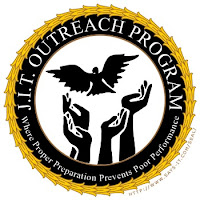Offender Profiles
File reviews of youth incarcerated at these facilities were consistent with the data collected by the surveys. The majority of youthful offenders held in Florida correctional facilities have a history of serious violent offenses, with a smaller number having lengthy criminal records for property, weapons, and drug-related offenses. In many cases, the offense for which they were sentenced had been plea-bargained from a more serious criminal offense. Among the four facilities visited, approximately 50 percent of the resident population were committed for serious violent offenses such as murder, rape, or aggravated assault. The remainder of the population was composed of serial property offenders, many with a record of violent criminal activity.
The Florida Youthful Offender Program includes offenders up to age 24, but in the facilities visited, the majority of the offenders were either 16 or 17 years old. A small number of 14- and 15-year-olds were also noted in each facility. The average length of stay in the facilities was 17 months. However, this figure does not differentiate between offenders released from the correctional system and offenders transferred to adult facilities to serve out the balance of their sentences. The ethnic composition of the population at the facilities was similar to the racial breakdown of the larger Florida correctional system, with 55 percent being African American.
Staff reported significant frustration in dealing with the youthful offender population, describing them as “impulsive” and “much more difficult to manage” than adult offenders. Moreover, the unpredictable behavior of the 16- and 17-year-old population seemed to spread to the older residents, influencing their behavior. Although the department has developed a standard 40-hour youthful offender training program to equip staff with skills to manage these youth, staff report that the training curriculum needs to be updated to better reflect the type of problems they must face. One frequently mentioned issue was that Florida’s reduction of gain-time eligibility, in conjunction with the advent of truth in sentencing, severely reduced incentives for good behavior among the population. With a diminished ability to reward good behavior in a tangible fashion, staff have not yet discovered a meaningful substitute to promote compliance with institutional rules. As a result, property damage, for example, is a major problem at the Hillsborough Correctional Institution, where supervision is complicated by the poor design of the facility.
An interesting observation made by staff at several facilities was that the recent increase in the capacity of the Florida Youth Agency has taken substantial pressure off the adult correctional system. In the past, the small capacity of the Florida juvenile correctional system created pressure on the courts to transfer youthful offenders to the adult correctional system. This trend is now beginning to reverse, and many youth, particularly less serious offenders traditionally sent to the adult correctional system, are now being incarcerated in the juvenile system.
The most notable facility visited was the Indian River Correctional Institution. This facility was distinguished by a strong staff commitment to encourage rehabilitation and to create opportunities for positive change. While the facility’s mission and program structure were similar to those of the other youthful offender facilities, the staff at Indian River were exceptional in their dedication to service and their realistic, but positive, view of their ability to change the inmates’ lives. Cynicism and staff burnout, characteristics of corrections professionals working with youthful offenders, were not evident.
The facility is unique in several ways. A volunteer services program in 1997 attracted more than 2,000 volunteers to provide services to residents of the facility. The community of Indian River gives between $12,000 and $15,000 each year to the institution to provide items and services not funded by the state’s budget. Also unique to the facility is its orientation program, during which department heads personally list the rules and describe opportunities available to newly arrived residents. This esprit de corps and the positive impact of this programming were evident in the orderly appearance and operation of the institution.

